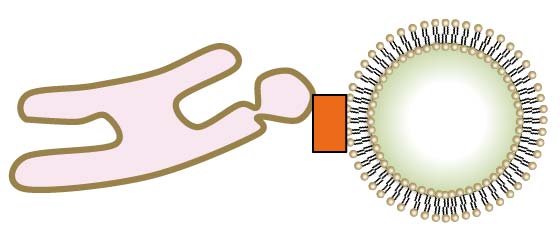Detail Information of Protein
Basic Information:
| Symbol | CERT1 |
| Synonyms | CERT; COL4A3BP; STARD11 |
| Protein Name | Ceramide transfer protein (hCERT) (Collagen type IV alpha-3-binding protein) (Goodpasture antigen-binding protein) (GPBP) (START domain-containing protein 11) (StARD11) (StAR-related lipid transfer protein 11) |
| Species | Human |
| Entrez ID | 10087 |
| Uniprot ID | Q9Y5P4 |
| Membrane Contact Site |
ER-Endosome; Endosome-ER

|
| Location (from literature) | Endosome |
| Cell line/Tissue | HeLa cells |
| Experimental Method | Low throughput experimental methods |
| Protein Sequence | |
| More related results |
Complex Information:
| Complex ID | Subunit of complex | Subcellular location | Species | More |
| CMCS00071 | VAPA; VAPB; CERT1 | ER-Endosome; Endosome-ER | Human | more | CMCS00072 | MOSPD2; CERT1 | ER-Endosome; Endosome-ER | Human | more |
Expression Overview of CERT1:
Homology Information of CERT1:
| Uniprot ID | Q9Y5P4 |
| EggNOG | KOG1739 |
| HOGENOM | CLU_017289_0_0_1 |
| OrthoDB | 5489052at2759 |
| TreeFam | TF106160 |
| GeneTree | ENSGT00940000155123 |
References:
| Pubmed ID | 33124732 |
| DOI | 10.15252/embj.2019104369 |
| Description | The endoplasmic reticulum possesses three major receptors, VAP‐A, VAP‐B, and MOSPD2, which interact with proteins at the surface of other organelles to build contacts; onventional FFATs (illustrated here with STARD11/CERT) which allow the formation of a stable complex between VAPs/MOSPD2 and thus the formation of MCSs. |
| Description of experimental evidence | The protein was validated by pull‐down assays, immunoprecipitation,SDS–PAGE, western blot, CIP treatment, coomassie blue staining, mass spectrometry analysis, immunofluorescence and colocalization analysis in HeLa cells. |
| More related results |